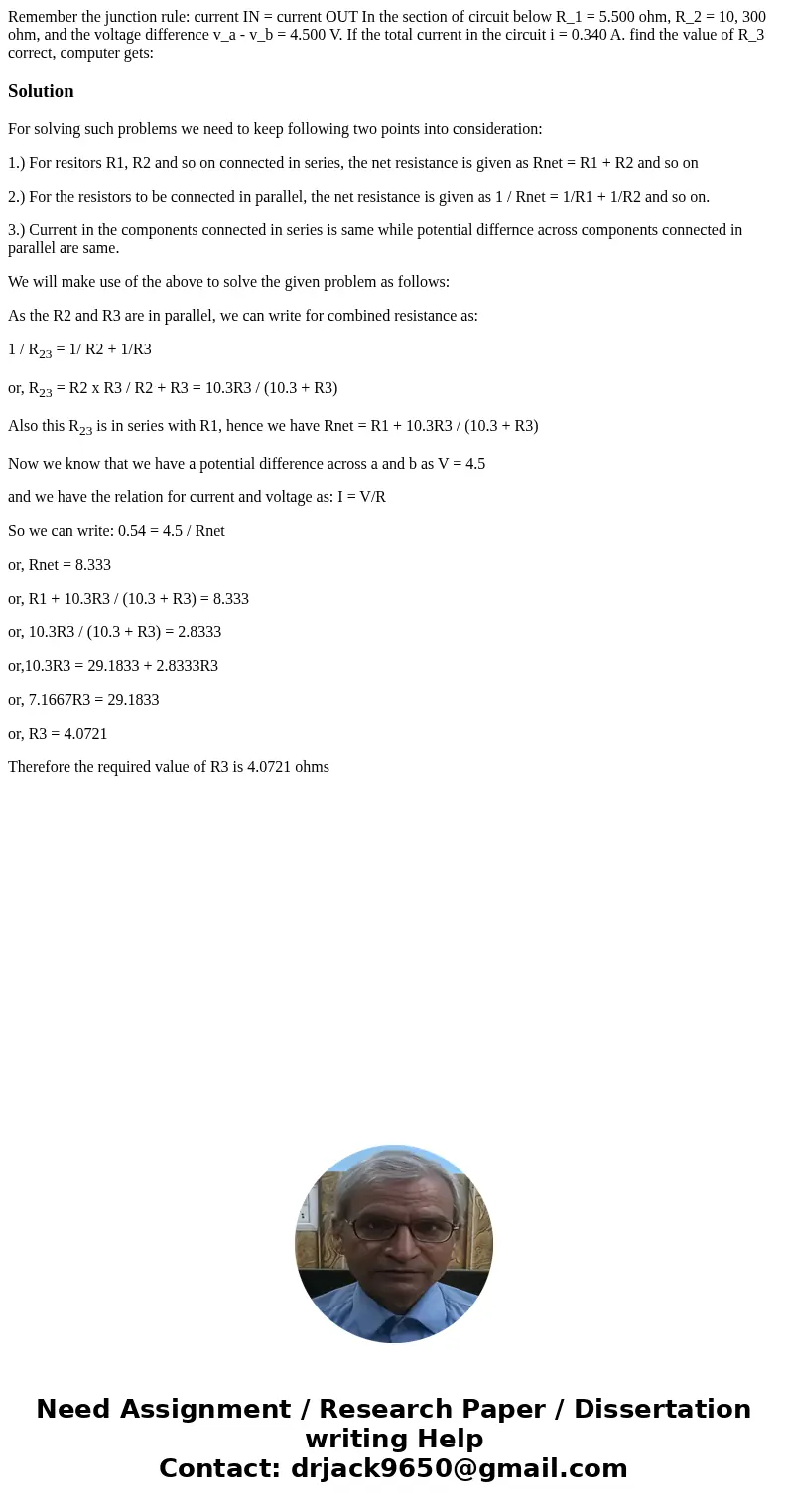Remember the junction rule current IN current OUT In the se
Solution
For solving such problems we need to keep following two points into consideration:
1.) For resitors R1, R2 and so on connected in series, the net resistance is given as Rnet = R1 + R2 and so on
2.) For the resistors to be connected in parallel, the net resistance is given as 1 / Rnet = 1/R1 + 1/R2 and so on.
3.) Current in the components connected in series is same while potential differnce across components connected in parallel are same.
We will make use of the above to solve the given problem as follows:
As the R2 and R3 are in parallel, we can write for combined resistance as:
1 / R23 = 1/ R2 + 1/R3
or, R23 = R2 x R3 / R2 + R3 = 10.3R3 / (10.3 + R3)
Also this R23 is in series with R1, hence we have Rnet = R1 + 10.3R3 / (10.3 + R3)
Now we know that we have a potential difference across a and b as V = 4.5
and we have the relation for current and voltage as: I = V/R
So we can write: 0.54 = 4.5 / Rnet
or, Rnet = 8.333
or, R1 + 10.3R3 / (10.3 + R3) = 8.333
or, 10.3R3 / (10.3 + R3) = 2.8333
or,10.3R3 = 29.1833 + 2.8333R3
or, 7.1667R3 = 29.1833
or, R3 = 4.0721
Therefore the required value of R3 is 4.0721 ohms

 Homework Sourse
Homework Sourse